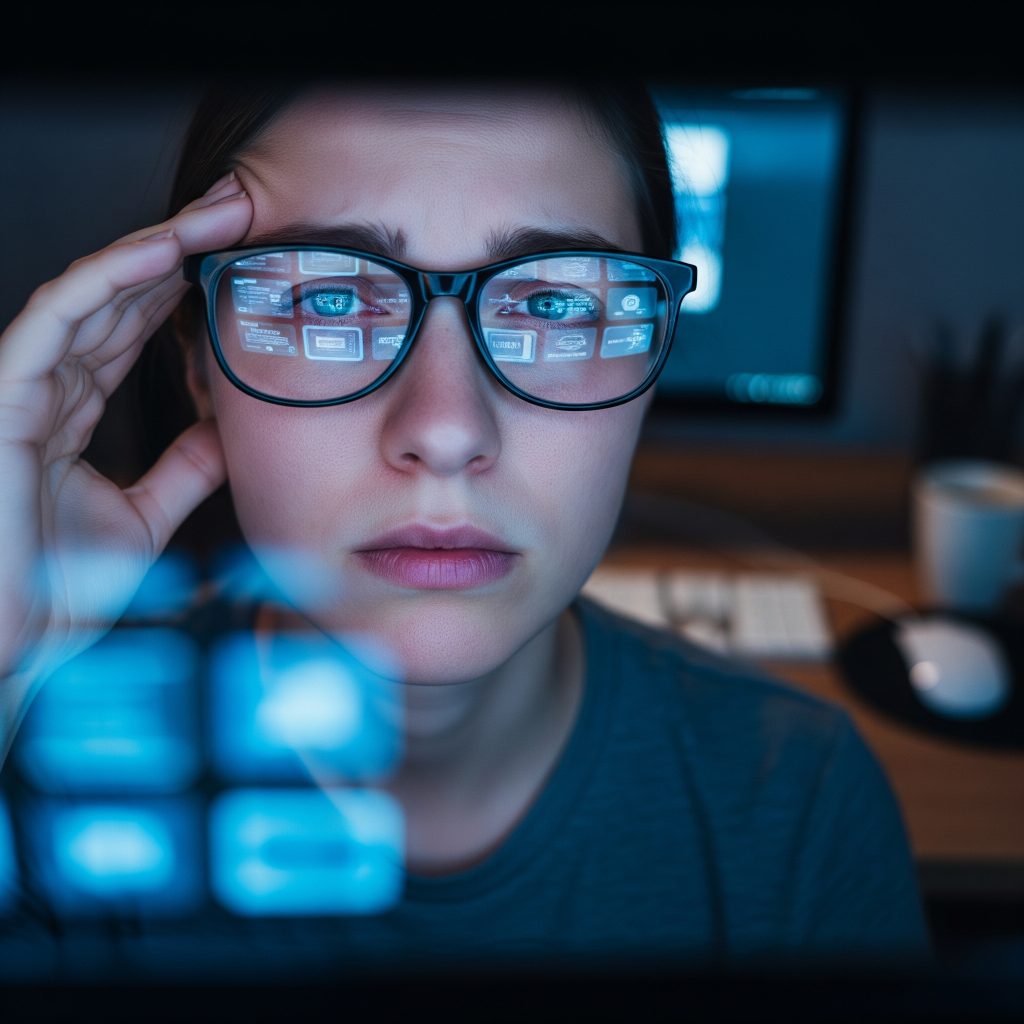
Understanding Light and Vision
Every visual experience begins when light hits the eye, first passing through the cornea, which provides most of the eye’s focusing power, then through the pupil and lens. The iris controls the amount of light entering, while the lens adjusts shape, thickening or thinning, to fine tune focus via the ciliary muscles. This foundational process, known as accommodation, enables us to see near and far clearly.
What Is Digital Eye Strain (Computer Vision Syndrome)?
Extended screen use can lead to a cluster of symptoms known as digital eye strain or Computer Vision Syndrome (CVS). These include dryness, irritation, headaches, blurred or double vision, neck and shoulder pain, and difficulty refocusing the eyes. These complaints arise not solely from blue light exposure, but from constant near focus, reduced blinking, glare, and poor ergonomics.
Benefits and Risks
Blue light is part of the visible spectrum, around 400 to 480 nm. It helps regulate sleep cycles, mood, and cognitive function. However, prolonged exposure, especially in the evening, can disrupt melatonin production, leading to sleep disturbances. On the ocular level, blue light can contribute to oxidative stress, potentially affecting the cornea and retina, though the risk from everyday screen exposure remains unclear.
What the Evidence and Expert Guidance Actually Say
While blue light contributes to digital fatigue, strong evidence linking typical screen exposure to serious eye diseases, like macular degeneration, is lacking. Long term effects are still under study, though concerns remain for sensitive groups such as children and older adults. The American Academy of Ophthalmology, along with other authorities, affirms that digital devices themselves do not cause permanent eye damage.
Simple, Evidence Based Strategies for Relief
Rather than relying solely on blue light blocking lenses, practical strategies yield better relief:
Follow the 20 20 20 rule: every 20 minutes, look at an object 20 feet away for 20 seconds.
Position your screen 20 to 28 inches away and slightly below eye level to reduce strain.
Reduce glare and match screen brightness to ambient lighting.
Remember to blink frequently to maintain eye lubrication or keep eye drops handy if dryness persists.
Use night mode on devices to curb blue light exposure in the evening.
Caring for Your Eyes with Findlay Creek Eye Clinic
At Findlay Creek Eye Clinic, we offer comprehensive assessments tailored to digital lifestyles. Our evaluations aim to identify root causes of discomfort, ranging from vision misalignment to dry eye, and recommend personalized solutions, from optimizing screen ergonomics to updating prescriptions and guiding sleep friendly habits. Trust our team to help you maintain clear, comfortable vision in our increasingly screen centered world.